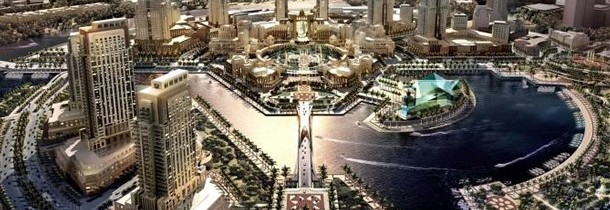Smart Cities Lead To Smarter Citizens
The vibrant city of Shanghai, China, was certainly an appropriate venue to host the recent Smart City China Expo & Congress, the most influential smart city forum in China. Sponsored by the China Ministry of Housing and Urban-Rural Development, smart city experts joined representatives from nearly 200 national smart city pilot projects and more than 200 international investment and financial companies, along with leading government visionaries, with the goal of sharing new ideas on every aspect of smart city development.
The “smart city” concept is often associated with large urban centers in developed economies, but the topic is gaining momentum throughout the world in developing as well as developed economies. This is especially true across APAC regions, where many economies have shown dramatic growth in recent years. People have been moving out of rural areas and into cities thanks to sharply rising standards of living and increased social mobility. These demographic trends have led governments to focus investments on urban design principles and supporting technologies that can turn crowded cities into more livable environments.
Some cities, such as a number of new urban centers in China, are so new that they can be designed from scratch, while other cities need to overlay new technology and thinking on preexisting designs. In all cases, however, smart cities share a number of characteristics that are vital to their success:
- Digitization of infrastructure
- Harmonization of technologies
- Alignment of business and government approaches
- Citizen participation
Iemke Idsingh, responsible for the Smart Cities activities at Oracle ORCL +0.8%, noted at the expo that “A Sentient City Infrastructure helps cities to almost literally sense, listen, hear, and action upon what is happening in the city. Connectivity and closed loops are key to that end.”
Digitization of Infrastructure
More established cities have developed along a path of step-by-step organic growth, where public transportation and highway development systems have been developed in isolation from other public services, such as health care and education. But these older cities can benefit from the latest digital technologies to modernize their operations, allowing them to become smarter and more adaptable. Old, isolated legacy systems can be replaced by a harmonized set of processes and applications that are simpler to maintain and update.
For example, advanced back-office systems can help make a city’s day-to-day operations more efficient and cost effective, just as they are doing in the private sector.
On the other end of the spectrum, many cities in China are still greenfield developments, which means planners can start with a blank canvas, learn from past experience, and adapt the city to people rather than forcing people to adapt to cities. One new approach relies on the concept of people-oriented microcities. Cities designed in this manner ensure that residents are within 10 to 20 minutes walking distance from housing, education, healthcare, work, leisure, shopping, and public transportation hubs that connect with other microcities. This interconnected group of communities, supported from the get-go by digital technologies, makes up the larger city in a pattern of broader urban transformation.
In all cases, the implementation of fully harmonized systems paves the way for collaboration between different city departments and services as their IT systems can now talk to each other and share data more easily. And the integration of arrays of smart sensors within the city infrastructure adds to the capabilities of city governance, allowing managers to better understand usage of key systems such as power and water utilities, and traffic and public transport patterns. Analytic systems can provide key insights for more effective planning, making cities truly smarter.
Alignment of Business and Government Approaches
Business leaders responsible for building up profit-driven commercial enterprises have been ahead of the game in the digital age, leveraging IT systems that lower their costs and give them a business advantage. In many cases, their IT processes stretch out to partners and suppliers, allowing them to collaborate as a single, highly competitive business ecosystem. With smarter, more open systems, city governance itself can be integrated into the business ecosystem. Like businesses, cities also have to be resilient and able to generate revenues. Cities that are better connected to their business constituents are by nature more adaptive to economic transformations, thus becoming more capable and competitive. That closeness also allows each city to adapt itself to whatever makes it unique, whether it’s tourism, traditional manufacturing, or becoming a high-tech hub.
The average city dweller has also been ahead of local governments when it comes to enthusiastic adoption of new technology. An indispensable part of life for most young people is their smartphone, which gives them the ability to connect at multiple levels with their friends and peers, get the latest information that interests them, and even create virtual communities online. When local governments open up their data to their citizens, people can make better decisions based on information that’s relevant to them, such as when to use a certain traffic route, where to find a parking space, and how to best regulate their use of electricity. Smart cities make for smarter citizens.
This effort is bidirectional. For example, when alerts are sent out about transportation delays, people can find alternate routes to where they want to go. They, in turn, can also push out information to their own virtual communities so more people can make smarter decisions. Connected citizens can also supply intelligence by reporting delays in public transportation.
Going one step further, the community can even be brought into the planning phase of next steps for city development. Citizens are no longer just end-users but begin-users—they become involved in planning and design, and the city benefits from their imagination in a way not possible with purely centralized decision-making. These examples of crowd sourcing not only harmonize people and their cities on a daily basis, but they harness citizens’ creativity to solve city issues in a more adaptive and effective way.
The Dramatic Impact of Smart Cities
Best of breed solutions covering key city governance areas such ERP, HR, process management, and integrated planning, budgeting, and reporting have allowed cities to bring data, people, and resources together more effectively than ever before. As Oracle’s Idsingh noted, “Cities can use modern technology to establish a citywide nervous system that allows citizens and cities to share responsibilities.” Cities can become more truly modern, and optimize the services they provide, by harmonizing processes and modernizing technology infrastructure. Links between local governments and business can be strengthened by using standards-based technology that allows closed-loop feedback sensor networks, while social networks can allow citizens to engage with their cities as well as each other, all leading to open and connected smart and imaginative cities, with smarter citizens who are better equipped to move ahead into the future.
Fonte: Forbes



